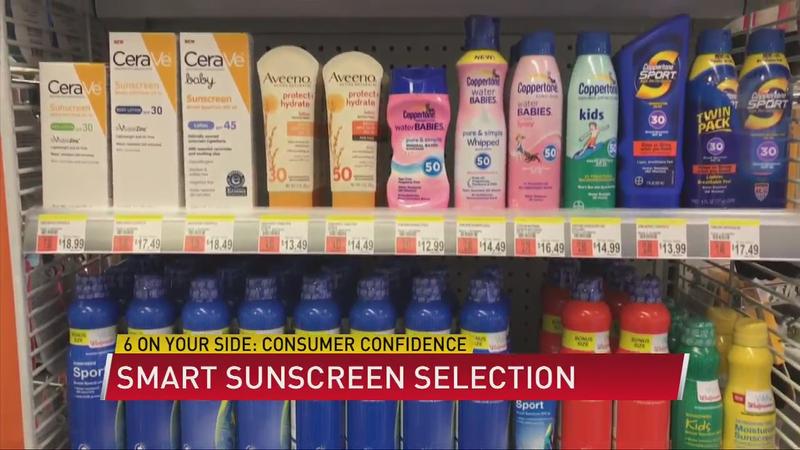6 On Your Side: Consumer Confidence, Smart Sunscreen Selection
(ABC 6 News) – No matter how or when you’re spending time outside, it’s important to wear sunscreen. But how do you know which one is best?
Sunscreen labels can be confusing, which is why Consumer Reports shares some tips to help decide which sunscreen will best protect your skin.
Your head may spin from all the different labels: "SPF," "Sport," and "Reef Safe" are among the more common. However, the most important label is "Broad Spectrum."
"’Broad Spectrum’ means that sunscreen will protect against both UV-A rays, which are responsible for skin cancer and skin aging, and UV-B rays, which are responsible for sunburn and contribute to skin cancer," said Consumer Reports’s Trisha Calvo.
"SPF" stands for "sun protection factor" and is a measure of how well a sunscreen protects against sunburn. An SPF 100 does not provide twice the amount of protection as an SPF 50. Instead, SPF 100 blocks 99% of the sun’s burning UV-B rays, while SPF 50 blocks 98%, and SPF 30 blocks 97%.

Sunscreens labeled as "Water Resistant" remain effective for the time stated on the bottle when you’re swimming or sweating.
Terms like "Reef Safe" and "Sport" are not regulated terms, and neither is "Dermatologist Tested." Calvo states, "some of the labels you see on sunscreens are just for marketing purposes and may not mean what you think they do."
No matter what sunscreen you choose, it matters most how you apply it. For lotions, use about a teaspoon per body part or area not covered by clothing. For sprays, apply enough that your skin glistens, then rub it in.

